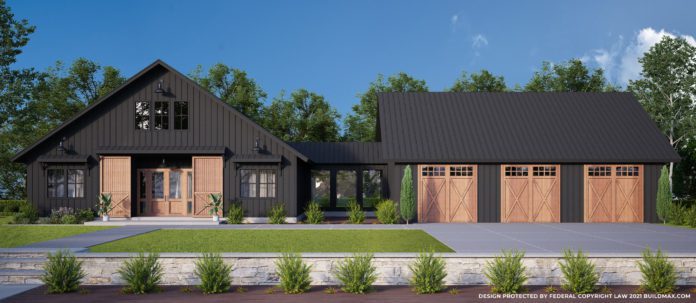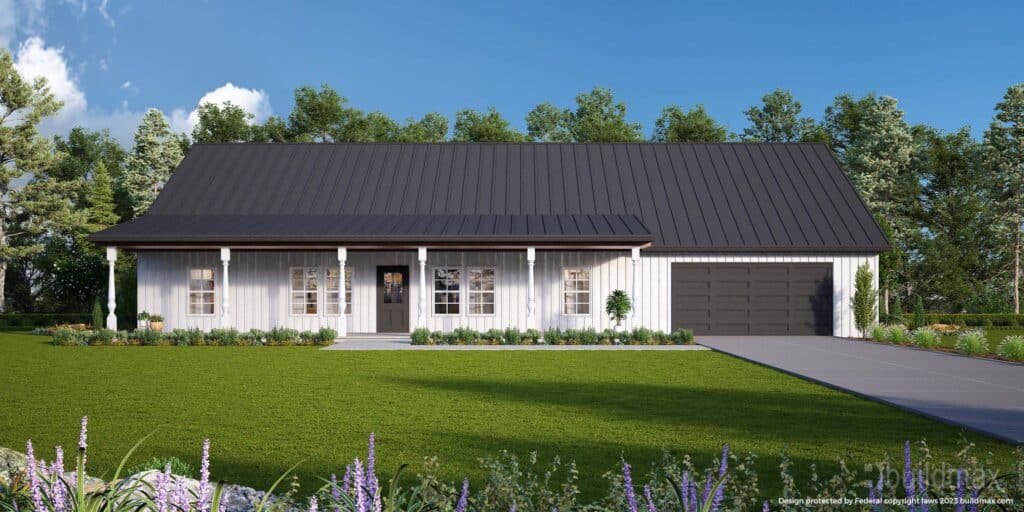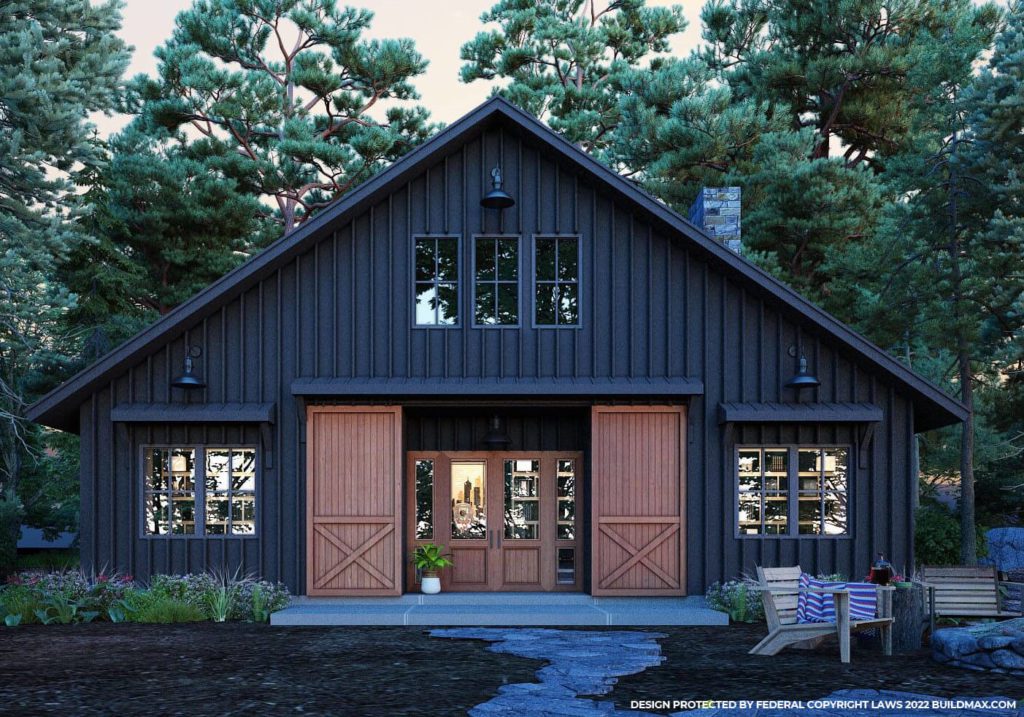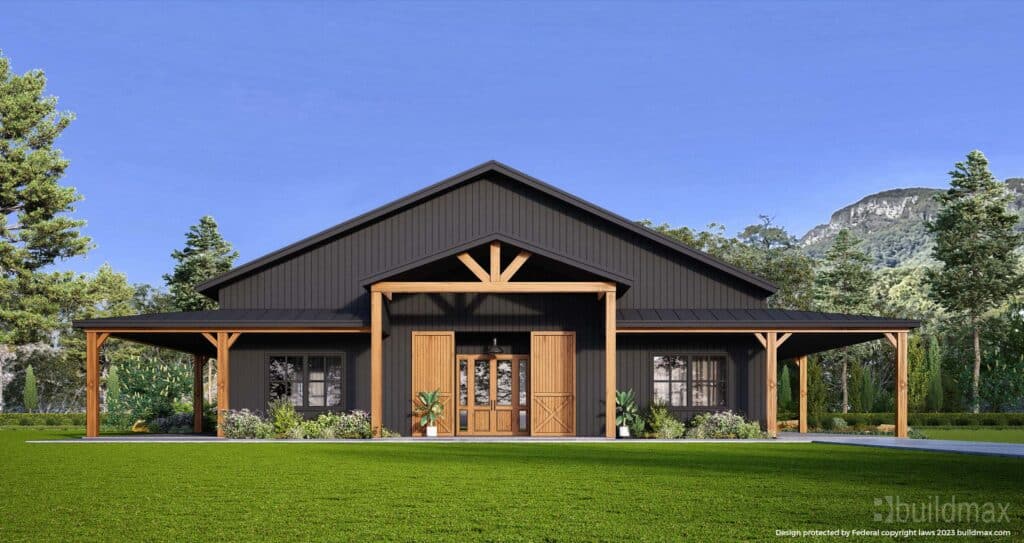Originally, barndominiums were designed without basements. Their structure was reminiscent of spacious barns, typically erected over solid cement slabs. So, is it possible for these unique homes to include a basement? Absolutely. Even though it deviates from the conventional design, barndominiums can certainly be constructed with a basement foundation.
When planning the foundation for a barndominium, several choices are available. These include a basic concrete slab, a crawl space, or even a full basement foundation. Most of these homes historically rely on the slab method — a straightforward, flat concrete foundation. If you choose to build using metal, the building’s metal posts are anchored firmly to this slab.
For those considering a crawl space or basement, the process entails digging out the area, then pouring and shaping the concrete for the walls and floor. After that, specialized brackets are employed to fasten the barndominium’s frame posts.
However, integrating a basement into your barndominium design may not always be the wisest choice. Here are some factors to ponder when deciding on the foundation of your barndominium.
Understanding Basement Options for Barndominiums
Barndominiums, while a unique housing concept, can incorporate various basement styles often seen in standard homes. The possible configurations include:
- Partial Basements:
These don’t occupy the entire footprint of the residence, often covering only a part of the home’s foundation.
- Walk-out Basements:
Ideal for properties on inclined terrains, one side of these basements is usually exposed, providing direct outdoor access.
- Full Basements:
Here, the basement’s scope aligns with the building’s frame, encompassing the same area as the primary floor above.
Conventionally, the walls of these basements are fashioned from concrete, with many also featuring concrete flooring. When considering a basement type for your barndominium, it’s vital to recognize the structural and design implications of each choice.
Traditional barndominiums, whether they’re made with a post frame or steel frame, have their post columns firmly rooted in the ground. When incorporating a full basement, these posts might have to be fixed to brackets atop the foundation. While this alteration in the construction approach is not overly drastic, it’s advisable to engage a seasoned contractor for the task.
A simpler alternative might be to opt for a partial basement. These basements cover only a segment of the house’s footprint, with the remainder of the ground floor resting on a concrete slab. Not only is this choice generally more budget-friendly than a full basement, but it also integrates more seamlessly into the barndominium’s design.
Given that the home’s edges are still buttressed by the slab, the framework’s construction procedure stays largely consistent. The only trade-off is that you might sacrifice some potential underground space.
On the more intricate end of the spectrum is the walk-out basement. This design is typically reserved for homes situated on inclined terrains or hillsides. Due to the gradient, one side of the foundation aligns with the ground surface, facilitating the addition of an exit door. Nevertheless, it’s worth noting that the intricacies associated with walk-out basements might elevate their overall price.
The Perks of Integrating Basements in Barndominiums
Incorporating a basement into your barndominium design brings with it a multitude of advantages:
- Expanded Space:
One of the primary benefits of having a basement is the additional space it provides. This space can be optimized for various functions such as laundry, storage, or even as supplementary living quarters. For those working with limited lot sizes, the added underground footage can be particularly beneficial.
- Enhanced Safety:
The solid concrete walls of a basement offer a robust shield against the elements, especially when contrasted with the more conventional wood or steel house frames. In the face of extreme weather events like tornadoes, the basement can serve as a secure refuge.
- Natural Cooling:
Given their subterranean nature, basements tend to maintain a cooler temperature relative to the home’s upper levels. For those setting up their barndominiums in warmer climates, a basement can be a haven, offering a much-needed respite from the scorching heat above.
In summary, a basement isn’t just an architectural decision but one that can enhance the functionality and safety of your barndominium.
Challenges of Incorporating Basements in Barndominium
While basements offer various benefits, there are certain challenges to consider when thinking of adding one beneath a barndominium:
- Increased Costs:
Constructing a basement involves additional expenditures. The excavation process, coupled with laying concrete walls, demands more resources, both in terms of labor and materials.
- Extended Construction Time:
Compared to the relatively quick process of pouring a concrete slab, which can range from a few days to two weeks depending on the structure’s size, basements demand a longer construction timeline. It’s not uncommon for a full basement to necessitate several weeks for completion.
- Regulatory Considerations:
It’s essential to understand that basements don’t always qualify as replacements for primary living areas. In many regions, for a room within a basement to be classified as a bedroom, it must possess windows and exterior access. Such features are usually limited to walk-out basements.
- Lighting Concerns:
Basements, by nature, lack abundant natural light. Should you wish to transform it into a comfortable living space, it might require a significant investment in artificial lighting. Additionally, to make the space more inviting, there could be extra costs involved in finishing the walls, ceiling, and floors.
In conclusion, while basements can enhance the functionality of a barndominium, they come with their set of considerations that potential homeowners should be aware of before making a decision.
Exploring Basement Alternatives for Barndominiums
If you’re contemplating different foundation options other than a basement for your barndominium, two primary alternatives stand out: slab foundations and crawl spaces.
- Slab Foundations:
These are predominantly chosen due to their straightforward, flat concrete structure. Their swifter preparation time means you can commence the construction of your barndominium’s frame much earlier. Moreover, slabs are pocket-friendly, often making them the go-to choice for many.
- Crawl Spaces:
As the name suggests, these spaces are limited in height, usually spanning between three to four feet. Their primary utility is to grant access beneath the floor and serve as supplementary storage. Like partial basements, crawl spaces can seamlessly blend with a surrounding slab, ensuring that the barndominium’s frame design remains consistent.
Wrapping Up on Barndominium Basements
While barndominium basements bring along a set of perks, they also come with certain challenges. Incorporating a basement means added work, possibly extending your project’s timeline by several weeks or even more.
One cannot ignore the cost implications either, especially if you’re leaning towards a full or walk-out basement design. It’s also important to note that if you’re building with steel, the cost to get a basement engineered is extremely high. While it can be done, many people find it’s often not worth the cost or trouble that comes with it.
However, the utility of basements is undeniable. They offer extended space, perfect for utilities like laundry setups. For those with spacious basements, there’s potential to transform the area into leisure spaces, such as a cinema room or gaming zone.
In essence, barndominiums are as versatile as conventional homes in terms of design choices. While basements remain a viable option, they entail certain considerations and might benefit from the expertise of a contractor seasoned in basement foundation projects.













